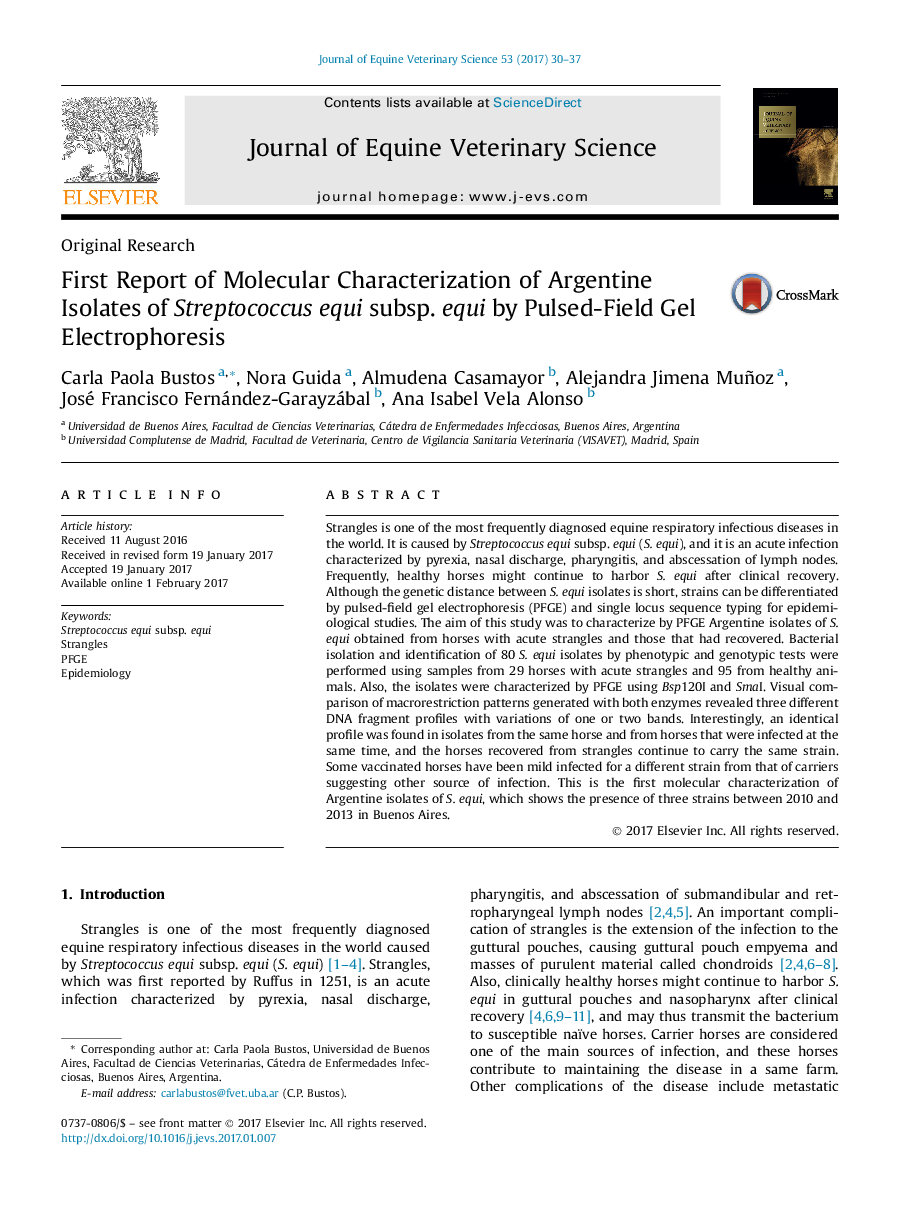| Article ID | Journal | Published Year | Pages | File Type |
|---|---|---|---|---|
| 5535642 | Journal of Equine Veterinary Science | 2017 | 8 Pages |
â¢Identical PFGE profiles were found in isolates from the same horse and from the same outbreak.â¢The same PFGE profile was found in isolates obtained from carriers recovered from the same outbreak.â¢Some vaccinated horses have been mild infected for a different carrier strian in the same farm.â¢Our findings indicate that PFGE is a useful tool for tracing sources and spread of the infection.â¢Our results showed the presence of three strains using PFGE between 2010 and 2013 in Argentina.
Strangles is one of the most frequently diagnosed equine respiratory infectious diseases in the world. It is caused by Streptococcus equi subsp. equi (S. equi), and it is an acute infection characterized by pyrexia, nasal discharge, pharyngitis, and abscessation of lymph nodes. Frequently, healthy horses might continue to harbor S. equi after clinical recovery. Although the genetic distance between S. equi isolates is short, strains can be differentiated by pulsed-field gel electrophoresis (PFGE) and single locus sequence typing for epidemiological studies. The aim of this study was to characterize by PFGE Argentine isolates of S. equi obtained from horses with acute strangles and those that had recovered. Bacterial isolation and identification of 80 S. equi isolates by phenotypic and genotypic tests were performed using samples from 29 horses with acute strangles and 95 from healthy animals. Also, the isolates were characterized by PFGE using Bsp120I and SmaI. Visual comparison of macrorestriction patterns generated with both enzymes revealed three different DNA fragment profiles with variations of one or two bands. Interestingly, an identical profile was found in isolates from the same horse and from horses that were infected at the same time, and the horses recovered from strangles continue to carry the same strain. Some vaccinated horses have been mild infected for a different strain from that of carriers suggesting other source of infection. This is the first molecular characterization of Argentine isolates of S. equi, which shows the presence of three strains between 2010 and 2013 in Buenos Aires.
